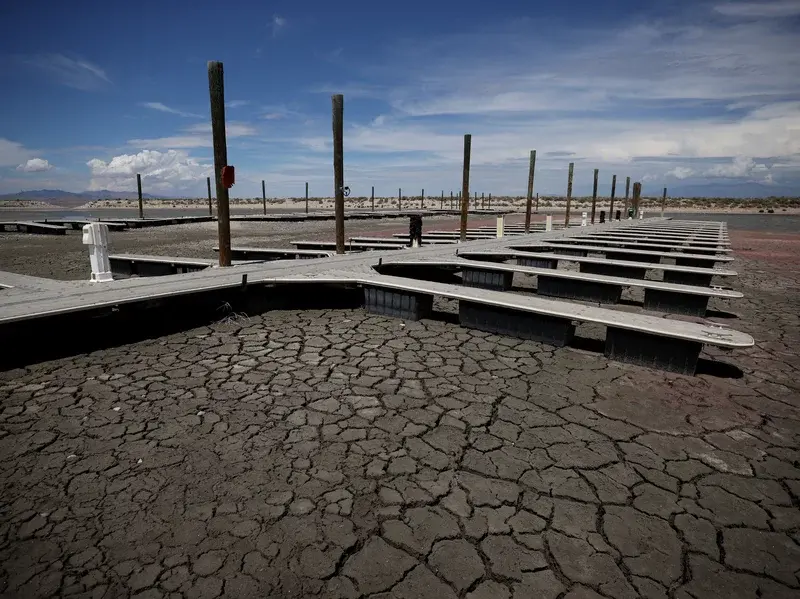The Great Salt Lake has been steadily shrinking, losing around 40 billion gallons a year since 2020, according to The Guardian. As the western hemisphere’s largest saltwater lake has been disappearing, state officials are reluctant to provide more water for the lake because that water would have to be used at the expense of agriculture. As a result, environmental groups are suing the state due to a lack of action to save the iconic lake from drying up. They argue that Utah’s government is violating the public trust obligation by diverting water away from the lake. If the lake dries up, it could have dire consequences on not only the ecosystem, but the population of Utah as well.
Climate change has played a large role in shrinking the lake in recent years. As temperatures get warmer, the lake has seen record low water levels in 2021 and June 2022, CNN explains. Unless the lake’s inflow sees a sharp increase by 2024, it could disappear altogether within the next five years.
The groups that are suing the state of Utah include Utah Physicians for a Healthy Environment, the American Bird Conservancy, the Center for Biological Diversity, the Utah Rivers Council, and the Sierra Club, according to The Salt Lake Tribune. Resource managers have taken some steps to protect the lake, but the environmental groups explain that they must be more urgent in reducing the overconsumption of the water being diverted away from the salt lake. CNN states that around 74% of upstream water is diverted for farmers to irrigate crops. The Main argument of the plaintiffs is that the lack of action breaches the public trust duty. The case will be argued in the state court, and the Utah attorney general’s office said it is reviewing the lawsuit.
The Great Salt Lake supports a large ecosystem of brine flies and shrimp, as well as over 10 million migratory birds that stop at the lake annually, The Salt Lake Tribune says. Several industries also depend on the Great Salt Lake. Minerals from the lake support billion-dollar mineral businesses, and a multi-million-dollar brine shrimp industry relies on the lake as well.
If Utah’s iconic saltwater lake dries up, the air surrounding it is at risk of becoming poisonous. The New York Times explains that the lakebed contains high levels of arsenic. As more of the lakebed becomes exposed, winds could carry the toxic dust into nearby residential areas and into the lungs of residents. This would affect about three-quarters of the population of Utah if drastic action is not taken to protect the lake.
Climate change has made it even more difficult for the lake to recover from its losses in water. No easy solutions remain. However, a winter of significant precipitation has extended the lake’s lifespan by a short amount of time. According to CNN, Some organizations, such as the Church of Jesus Christ of Latter-Day Saints, have donated water shares to the cause and have shown their support.








